
THE OVERLAND SURVEYING FUNCTION OF THE DEVIL’S CHAIR
Kaumatua (learned elder) Graham Tatana of Ngati-kuri iwi (tribe) told this researcher that when his people first arrived in New Zealand from India in 700 AD they found a people that they named “the surveyors” due to the preoccupation of that people in setting up stone surveying markers and trigs all across the landscape.
This is also substantiated by the testimony of another New Zealander living in Hillsborough, Auckland whose great-grandfather was an early colonial surveyor in Northland, during the 19th century. The surveyor-ancestor, setting up trigs and markers in the back-of-beyond, noted in his diary that he could see the workmanship of earlier surveyors who had gone before him.
That has been the experience of this researcher also, who has a building site-surveying background. The handiwork or land-marker structures of the ancient New Zealand surveyor-astronomers are easy to detect all over the country and, very often the follow-on, colonial surveyors have simply plonked their modern-day trig towers atop the ancient summit mounds built, perhaps, thousands of years ago by the former, long-term inhabitants.
But we need to ask the question, what was the purpose of the actual seat carved into the “devil’s chair”, with its foot-rest and the ability of the seated individual to orientate his view to approximately 90-degrees opposed positions? For this, we first need to establish what the main, determining target was for the seated individual and thus the orientation of the boulder.
The evidence, which we will introduce as we proceed, shows that the ancient surveyor-astronomers were engaged in mapping the entire country and that the devil’s chair was part of a surveyor’s baseline that traversed the lower half of the North Island of New Zealand, then ran down the backbone of mountains (Southern Alps) of the South Island to Mt. Cook.

New Zealand could be considered as the most distant, habitable country in the world, away from the great continental land-masses and ancient civilisations of the Northern Hemisphere. It is often referred to as the “ends of the Earth” or, as the French say, “l’autre bout du monde”. Although New Zealand is about the same landmass as the United Kingdom or Oregon in the United States, it has a coastline length greater than the eastern and western seaboards of the United States, (sans Alaska). This long, narrow aspect of its geography, with many mountains and high hills or ranges, made it admirably suited for land-mapping by its ancient inhabitants.
The country is composed of two main islands, offset in dissecting angles by about 110-degrees. Main-trunk-line surveyor’s baselines were created by the ancient inhabitants, one running SSE from Northland to Lake Taupo and beyond, with another commencing at Mount Putauaki (Edgecumbe) on New Zealand’s North Island, East coast and running SW through the high mountain ridge backbone of the South Island before resolving at Mount Cook (New Zealand’s highest mountain).

An approximation or not-to-scale view of the dissecting baselines set up by ancient surveyors. Although many purpose-built marker structures have been identified on the North Island main-trunk-line, we have to rely on the “devil’s chair” and its associated targets and alignment partners to see what the intended baseline angle was for a dissection of the South Island.
To the right is seen what many researchers believe is an ancient obelisk depicting, in raised relief, a somewhat crude facsimile of New Zealand’s North Island. The southern orientation on the stone runs to the right rather than the left, but other features, including a hole where Lake Taupo should be is tantalisingly suggestive of an early map. The obelisk is said to have been hidden in a river, but was known to be there by an old blind Kaumatua (learned elder). The story goes that he entered the water and felt around for some time with his feet, until declaring that he’d found the ancient stone. It now sits on a Maori Marae (meeting house) at Omapere, Hokianga, Northland and has a very weathered, faint, layered spiral design on its rear face.
As stated, the alignment through the South Island doesn't’t begin at the devil’s chair, but at a dormant volcano called Putauaki (or Mount Edgecumbe) near the eastern coastline.
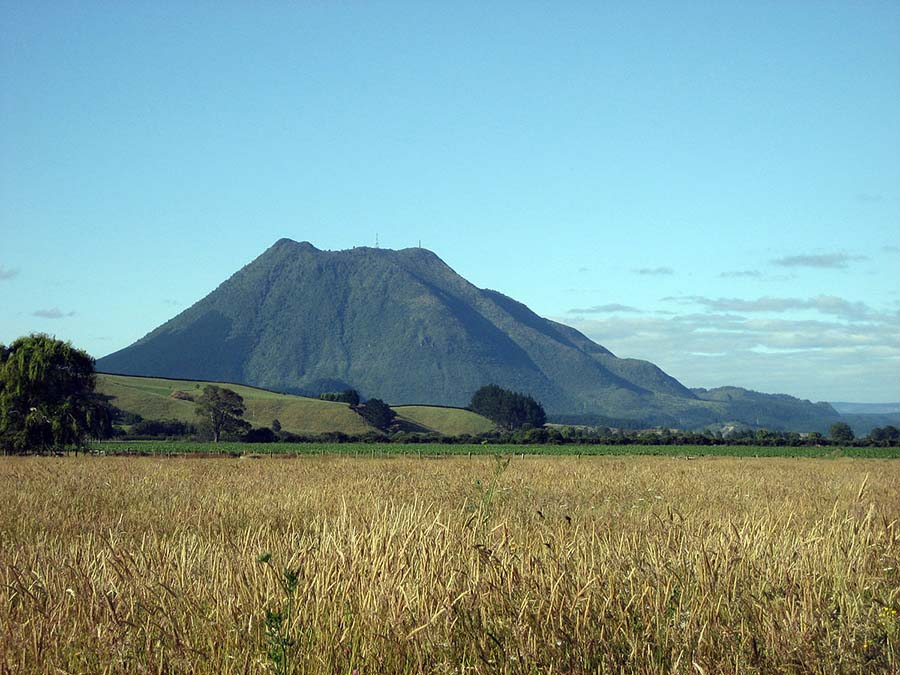
Using the centre or high trig point of Putauaki volcano a surveying line runs to the “devil’s chair” at Taupo.
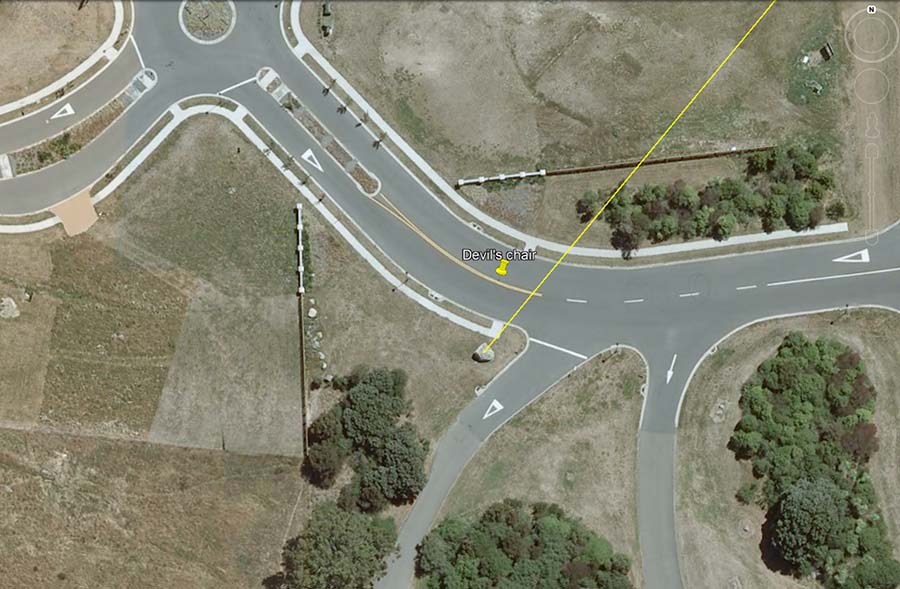
From the devil’s chair the line traverses Motutaiko island in the middle of Lake Taupo.
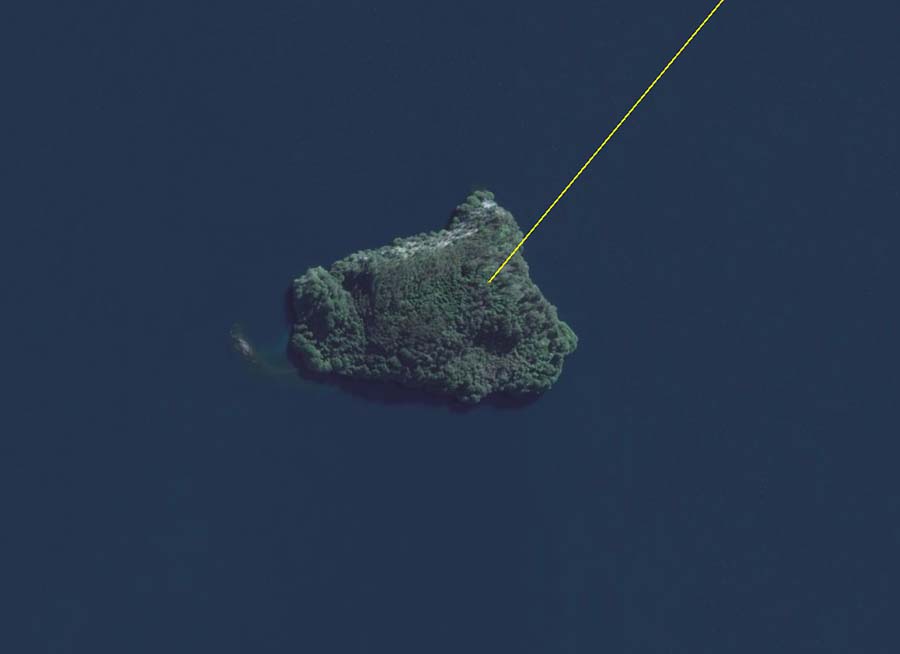
From Motutaiko Island the line runs to the volcanic cone of Mount Tongariro, one of the major volcanoes of New Zealand and periodically active.
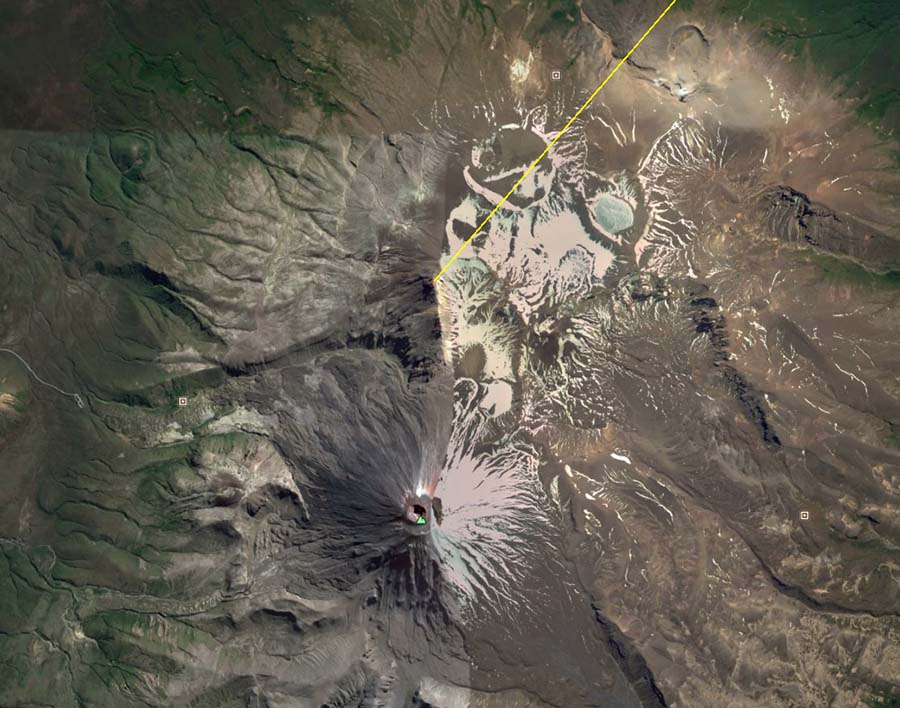
Mount Tongariro (which means going to the south) has a wide top, unlike its conical volcano neighbor, Mount Ngauruhoe. From here the line moves to the South Island and runs through the central top section of the South Island, the seawards valleys of the West Coast, and onto mountain tops the Southern Alps to resolve on Mount Aoraki (Mount Cook), the highest mountain in New Zealand. For the most-part, this dissection and its online high points in South Island would be utilised by West Coast surveyors.
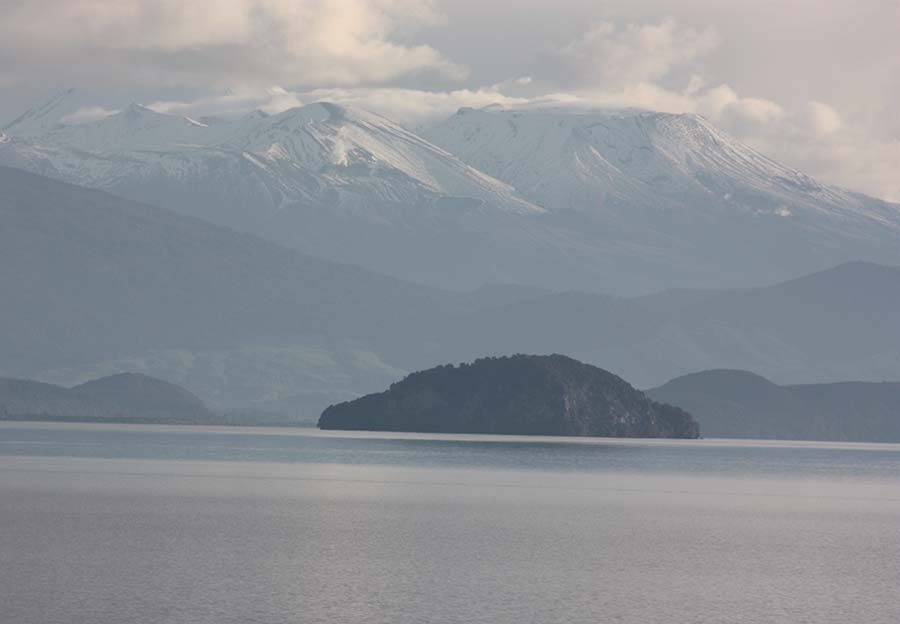
A view of Motutaiko Island as seen from the devil’s chair. Flat topped Mount Tongariro looms up behind it in this magnified photo. The alignment has run for 93-miles (149 kilometres) thus far from Putauaki volcano. Beyond Tongariro’s peak the line scoots past Mount Ngauruhoe and runs for an additional 420-miles (675 kilometres) to Mount Cook in the Southern Alps.
Where the alignment crosses onto the South Island at Nelson, 15-miles along the coast to the NW is Split-Apple Rock, a magnificently engineered solar observatory for viewing the winter solstice. See:
www.celticnz.co.nz/Split Apple Rock/WinterSolstice2018.html
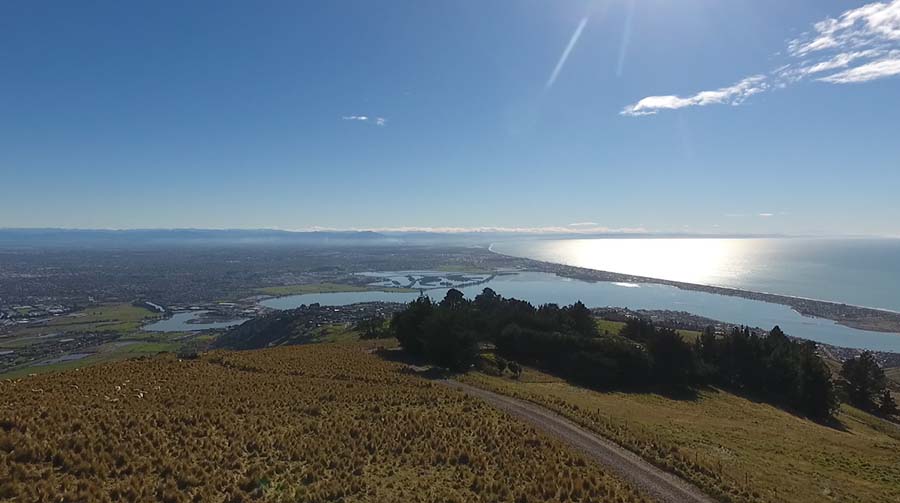
The long backbone of the Southern Alps, as seen looking northwest from the Port Hills of Christchurch City on the East Coast.
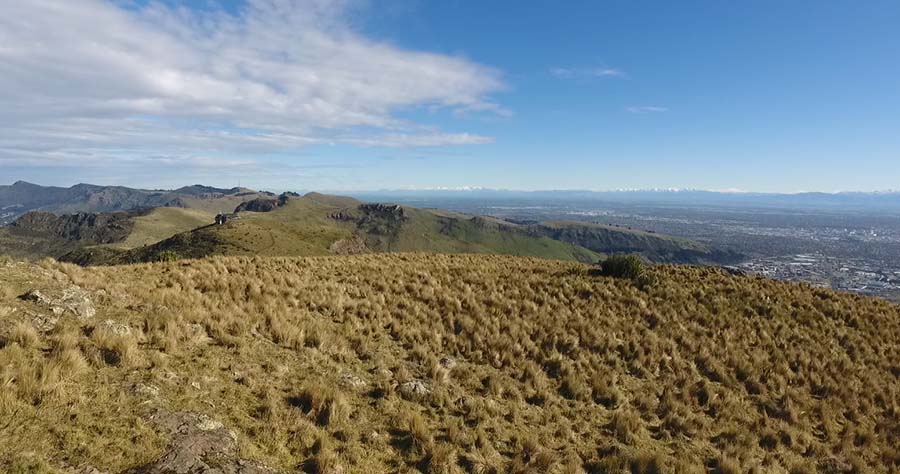
Further around the horizon, looking southwest at the seemingly endless range of mountains. Centrally in the picture are the snow-capped peaks around Mount Aoraki and the peak of the mountain itself.
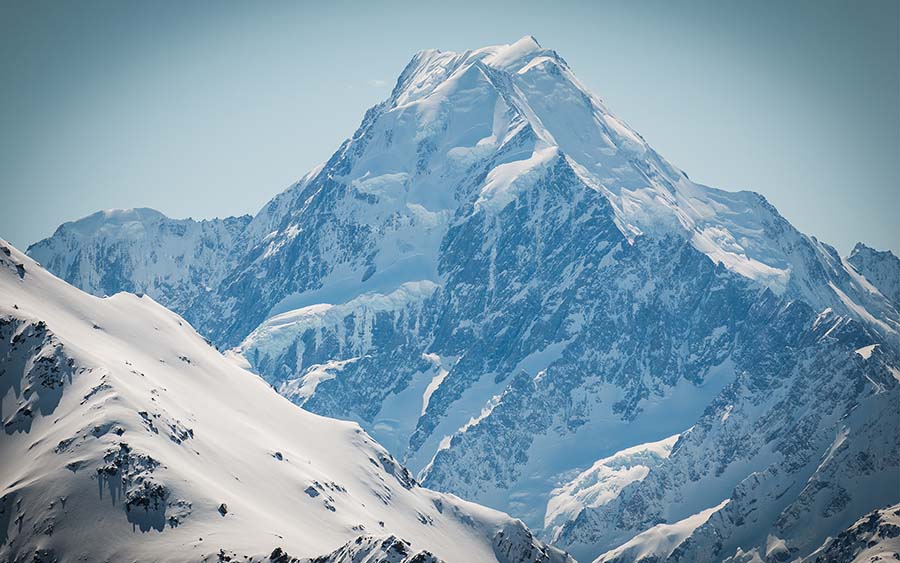
Mount Cook, New Zealand’s highest peak and a primary trig or target for ancient overland mapping alignments.
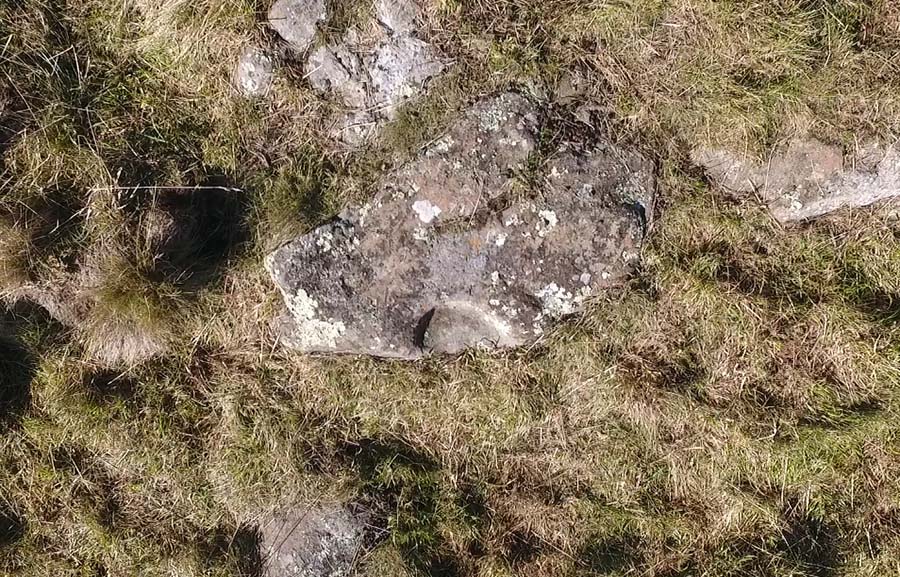
A photo taken from a drone, looking vertically down upon yet another hewn-out, devil’s chair, this time on the Port Hills of Christchurch City in New Zealand’s South Island. The stone seat faces towards a north-western section of the Southern Alps mountain chain and was probably used by both surveyors, for orientation onto targets, and ancient wayfarers traversing the country.
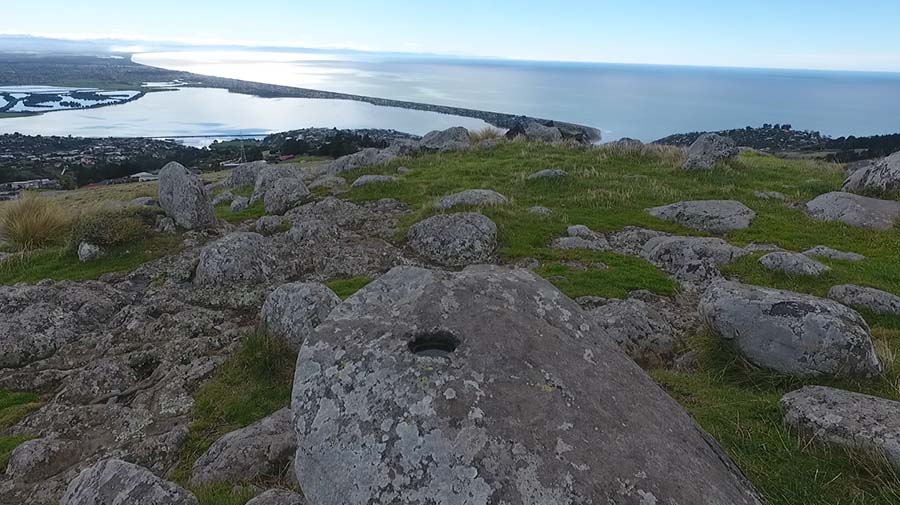
An indicator that ancient wayfarers were using these high points in their cross-country journeys is the presence of hand hewn bullauns, a cultural expression very prevalent in megalithic Ireland from about 5000-years ago. The unique use of bullauns in European countries on blessing and cursing altars or at holy wells, as a deeply ingrained ritual expression, extends from the British Isles, across Continental Europe to Russia. There were 3 positively-identifiable hand hewn bullauns on this site and bullaun bowls are found in profusion all across New Zealand, attesting to the presence of ancient inhabitants with a Northern Hemisphere, European heritage.
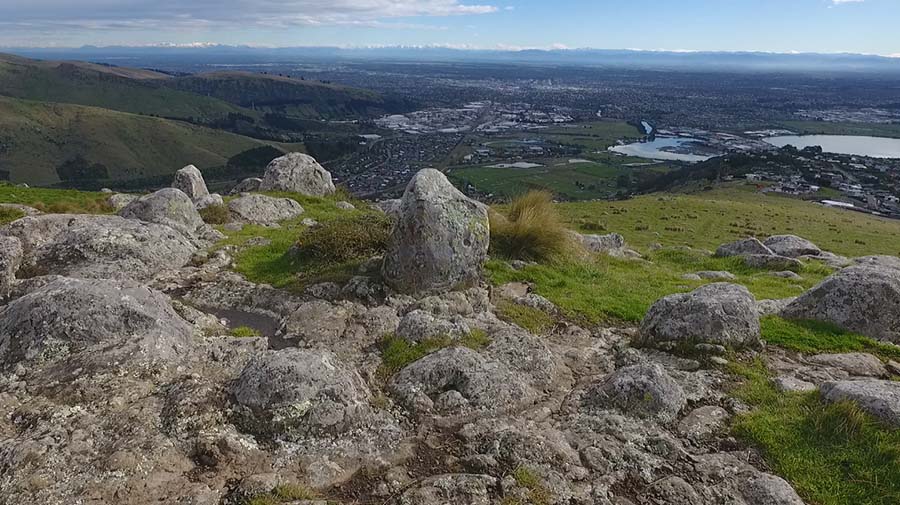
A central standing obelisk, supported in a cradle of stone adorns the crown of the hill and orientates westwards towards the Southern Alps. The faint, distant target of Mt Aoraki, capped in snow, would be to the left-top of the picture. The panoramic view would provide orientation to those traveling through the mountain passes on their way to the west coast of the country or northwards and southwards over more hospitable, lowland terrain.